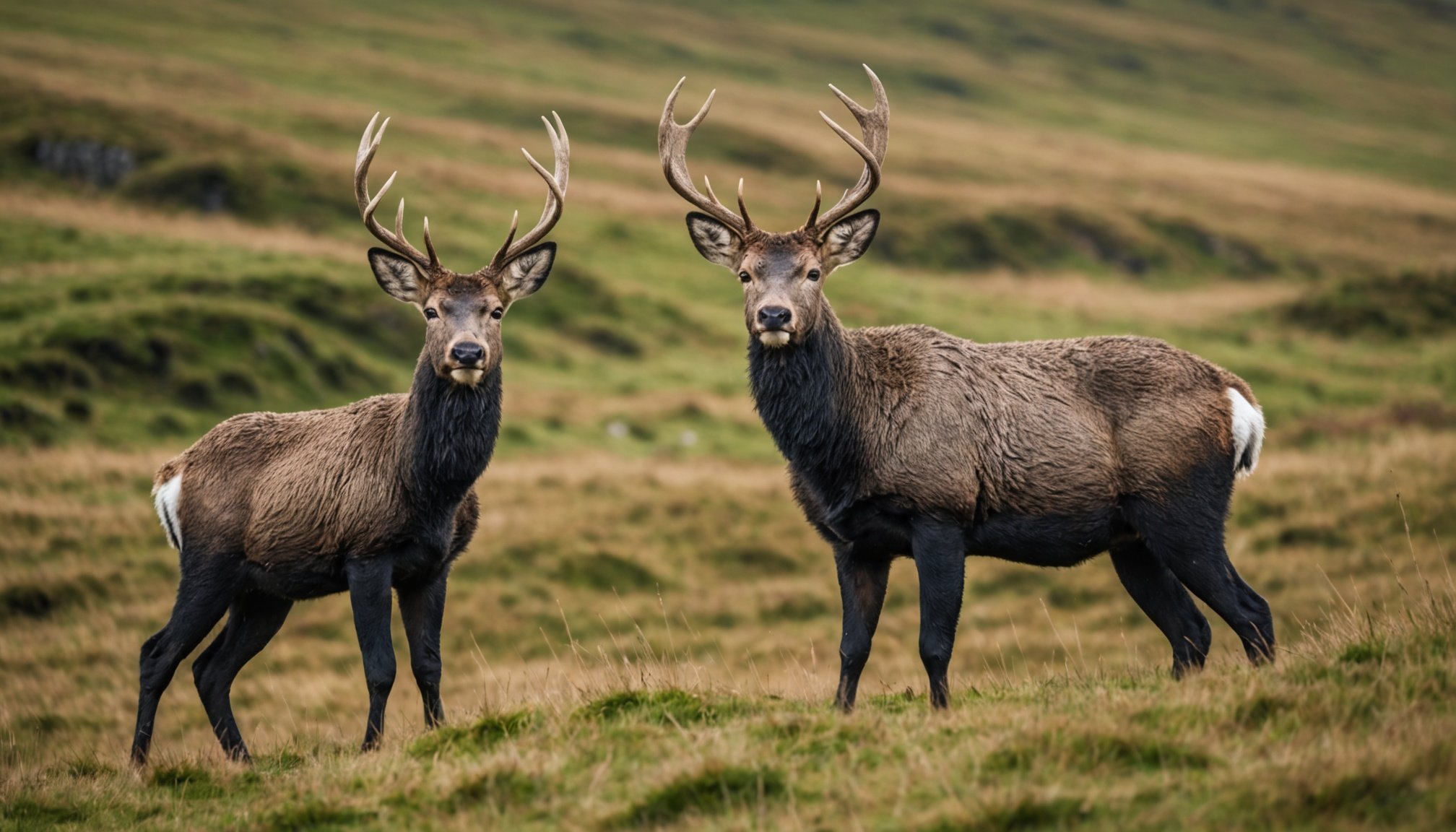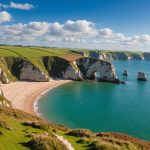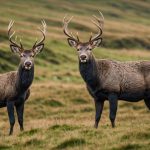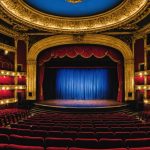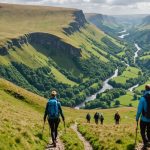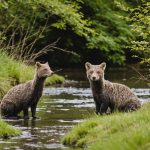Britain’s national parks are a treasure trove for wildlife photographers, offering breathtaking landscapes and diverse animal species. Capturing stunning images requires more than just a good camera; it demands skill, patience, and the right techniques. This ultimate guide unveils essential wildlife photography methods tailored for the unique environments and creatures found within these beautiful parks. Enhance your photography game and embrace the wonders of the great outdoors with expert tips that bring your wildlife images to life. Get ready to transform your photography experience!
Introduction to Wildlife Photography in Britain’s National Parks
Wildlife photography is an art that captures the beauty and intricacies of the natural world. In Britain’s National Parks, this art form flourishes, offering photographers a chance to explore diverse landscapes and ecosystems. Wildlife Photography Basics revolve around understanding the environment and the subjects within it. This knowledge is crucial for capturing authentic and impactful images.
Also read : Discover the Charm of a Traditional Cotswolds Village Fête: Your Guide to an Unforgettable Experience!
Britain boasts a variety of national parks, each with unique habitats and wildlife. These parks provide a sanctuary for species ranging from elusive otters to majestic red deer. Exploring these areas not only enhances one’s photography skills but also deepens the appreciation for nature’s wonders.
Understanding wildlife behavior is pivotal in this pursuit. By observing animal patterns and routines, photographers can anticipate movements, ensuring they are in the right place at the right time. This awareness elevates the quality of photographs, transforming them from mere snapshots to storytelling images.
Also to discover : Top Tips for Maximizing Your Experience at the Edinburgh Fringe Festival
For enthusiasts looking to delve into wildlife photography, Britain’s national parks offer a perfect blend of challenge and inspiration. By mastering the basics and respecting the natural world, photographers can capture the essence of wildlife in all its glory.
Essential Camera Settings for Wildlife Photography
Mastering camera settings is crucial for capturing stunning wildlife images. To freeze fast-moving animals, a fast shutter speed is essential. This setting prevents motion blur, ensuring sharp and detailed photos. Depending on the subject’s speed, a shutter speed of at least 1/1000th of a second is recommended.
Equally important is the aperture, which controls the depth of field. A wider aperture (lower f-stop) creates a beautifully blurred background, highlighting the subject. However, balancing this with a sufficient depth of field is necessary to keep the entire animal in focus. An aperture of f/4 to f/8 is often ideal for wildlife photography.
Lighting conditions in natural settings can be unpredictable. Adjusting the ISO sensitivity helps maintain image quality in various lighting situations. In low light, increase the ISO to allow more light into the camera without compromising shutter speed or aperture. However, be cautious, as a high ISO can introduce noise. Experimenting with these settings in different scenarios aids in finding the perfect balance for your shots.
By understanding and adjusting these wildlife photography techniques, photographers can significantly enhance their ability to capture the essence of wildlife in their natural habitats.
Best Times for Wildlife Photography
Understanding the timing of your photography sessions can significantly enhance your wildlife images. The golden hours, which occur during early morning and late afternoon, offer the best natural lighting. During these periods, the light is softer and warmer, reducing harsh shadows and creating a more appealing atmosphere for your shots.
Seasonal variations also play a crucial role in wildlife photography. Different seasons affect animal behavior and visibility. For instance, spring is ideal for capturing breeding activities, while autumn showcases animals preparing for winter. Each season presents unique opportunities and challenges, requiring photographers to adapt their techniques accordingly.
Wildlife observation is key to determining optimal shooting times. By understanding animal activity patterns, photographers can plan their sessions to coincide with peak wildlife movements. For example, many animals are more active during dawn and dusk, making these times perfect for capturing dynamic behaviors.
To maximize the potential of your wildlife photography, consider these factors and adjust your schedule to align with nature’s rhythms. This approach not only increases the likelihood of successful shots but also deepens your connection with the subjects you aim to capture.
Locations for Wildlife Photography in National Parks
Exploring wildlife hotspots within Britain’s national parks is essential for photographers seeking to capture diverse species. Each park boasts unique environments and species, offering a rich tapestry for wildlife photography.
Among the top national parks locations is the Cairngorms, known for its vast landscapes and species like the elusive Scottish wildcat. The park’s varied terrain provides ample opportunities for capturing these rare creatures. Similarly, the Lake District offers stunning backdrops with its mountains and lakes, home to red squirrels and otters. Photographers can find these animals in woodlands and along water bodies.
In Exmoor, the open moorlands are prime settings for photographing red deer, particularly during the rutting season. Snowdonia, with its rugged peaks, is ideal for capturing birds of prey such as the peregrine falcon. Each park has notable locations that cater to specific wildlife, enhancing the chances of successful photography sessions.
Accessibility is a crucial consideration. Many parks have well-maintained paths and viewing areas, but some wildlife hotspots may require a hike. Planning logistics, including travel and equipment needs, ensures a smooth and rewarding experience in these breathtaking natural settings.
Composition Techniques for Capturing Wildlife
Mastering composition is key to creating compelling wildlife photographs. One fundamental photography technique is the rule of thirds. By dividing the frame into a 3×3 grid, photographers can position the subject along these lines or at their intersections. This creates balance and draws the viewer’s eye naturally to the subject, enhancing the overall impact of the image.
Framing and background selection are equally crucial. A well-chosen background complements the subject without distracting from it. Consider using natural elements like branches or foliage to frame the animal, adding depth and context to the shot. This technique not only highlights the subject but also tells a story about its environment.
For dynamic and engaging compositions, vary your perspective. Shooting from a low angle can make the subject appear more majestic, while a high angle may reveal intriguing patterns in the landscape. Experiment with different viewpoints to find the most captivating arrangement.
Incorporating these composition techniques elevates your wildlife photography, transforming ordinary scenes into extraordinary visual narratives. By focusing on these aspects, photographers can capture not just images, but the essence of the wild.
Lighting Techniques for Wildlife Photography
In wildlife photography, understanding and mastering lighting is crucial for creating stunning images. Natural lighting, often preferred in wildlife settings, offers authenticity and enhances the subject’s natural beauty. The golden hours—early morning and late afternoon—provide soft, warm light, ideal for capturing wildlife with minimal shadows.
While natural light is often ideal, there are situations where artificial lighting can be beneficial. For instance, in dense forests or during overcast weather, using a flash can help illuminate the subject without altering the natural ambiance. However, it’s essential to use artificial light sparingly to avoid startling animals or causing unnatural shadows.
Outdoor photography tips suggest adapting to varied light conditions by adjusting camera settings like ISO, shutter speed, and aperture. For example, in low-light conditions, increasing the ISO can help maintain image clarity. Conversely, in bright conditions, a faster shutter speed can prevent overexposure.
Weather significantly impacts lighting and, consequently, photography outcomes. Overcast skies diffuse sunlight, creating softer shadows, while clear skies offer bright, direct light. Understanding these nuances allows photographers to anticipate and adapt to changing conditions, ensuring optimal lighting in every shot.
Ethical Considerations in Wildlife Photography
In the realm of wildlife photography, adhering to wildlife ethics is paramount. Respecting animals and their habitats ensures that photographers capture the natural world responsibly. This involves understanding the impact of human presence and taking steps to minimize disturbance.
Responsible photography starts with maintaining a safe distance from wildlife. Approaching too closely can stress animals, disrupting their natural behaviors. Using long lenses allows photographers to capture intimate moments without intrusion. Additionally, staying on designated paths prevents habitat damage, preserving ecosystems for future generations.
Guidelines for ethical wildlife photography emphasize patience and observation. Rather than manipulating environments or subjects for a perfect shot, photographers should wait for natural interactions. This approach not only respects the wildlife but also results in more authentic and compelling images.
Conservation plays a critical role in responsible photography. By raising awareness of endangered species and threatened habitats, photographers can contribute to conservation efforts. Sharing images that highlight the beauty and vulnerability of wildlife can inspire others to support preservation initiatives. Thus, ethical wildlife photography not only captures the essence of nature but also advocates for its protection.
Equipment Recommendations for Wildlife Photography
Selecting the right photography gear is crucial for capturing captivating wildlife images. Essential equipment starts with a reliable DSLR or mirrorless camera, offering fast autofocus and high-resolution capabilities. These features are vital for freezing motion and capturing intricate details in the wild.
When it comes to lenses, a telephoto lens is indispensable for wildlife photographers. A lens with a focal length of 300mm or more allows you to photograph animals from a distance without disturbing them. For versatility, consider a zoom lens like the 100-400mm, which provides flexibility in framing subjects of varying sizes and distances.
Beyond cameras and lenses, certain accessories can significantly enhance your wildlife photography experience. A sturdy tripod ensures stability, especially in low-light conditions or when using heavy lenses. A camera bag with weatherproofing protects your gear from the elements, while a lens hood minimizes glare and enhances image contrast.
Additionally, carrying extra batteries and memory cards is essential for extended shoots in remote locations. These equipment tips ensure you’re prepared for various wildlife photography scenarios, enabling you to focus on capturing the beauty and behavior of animals in their natural habitats.

